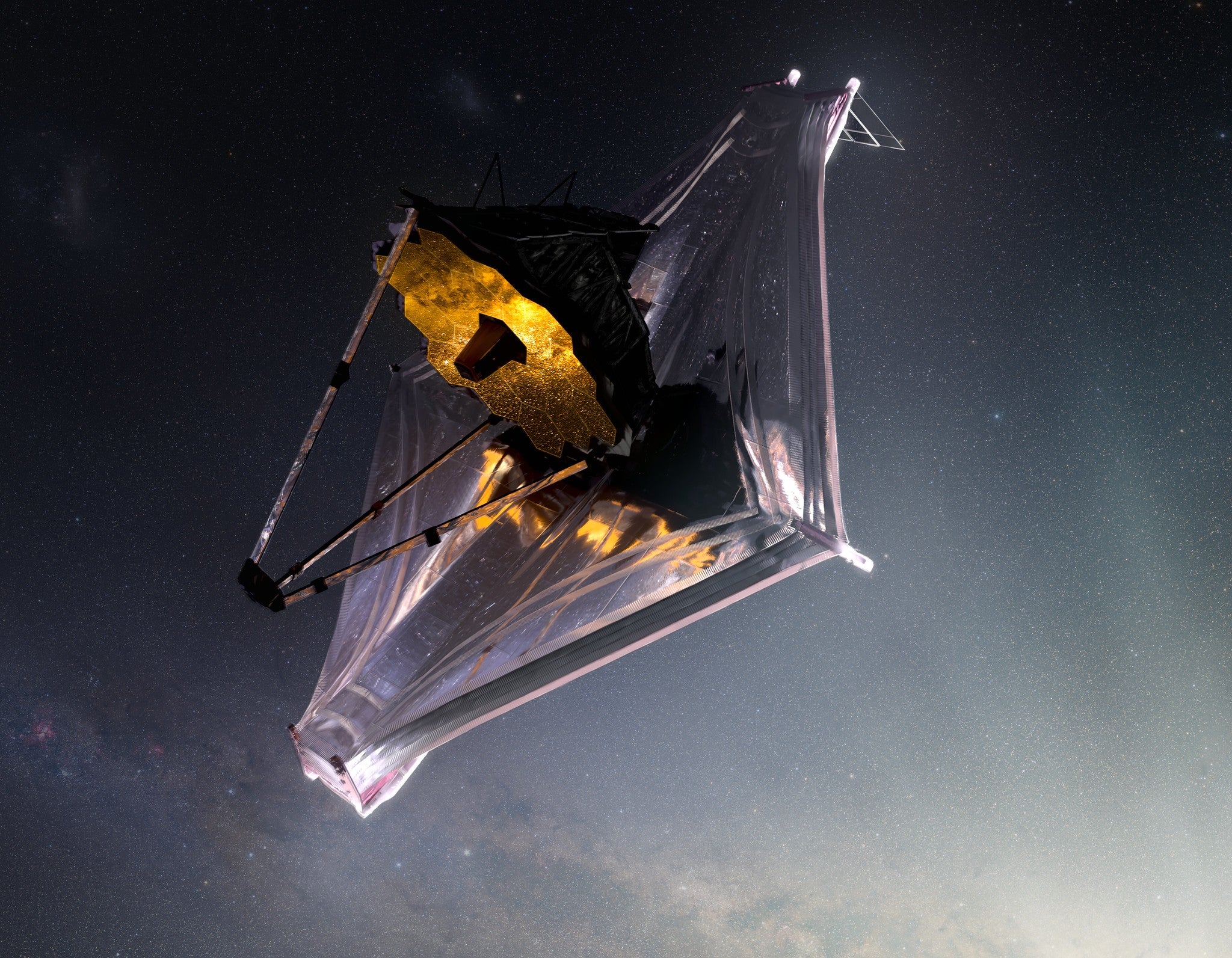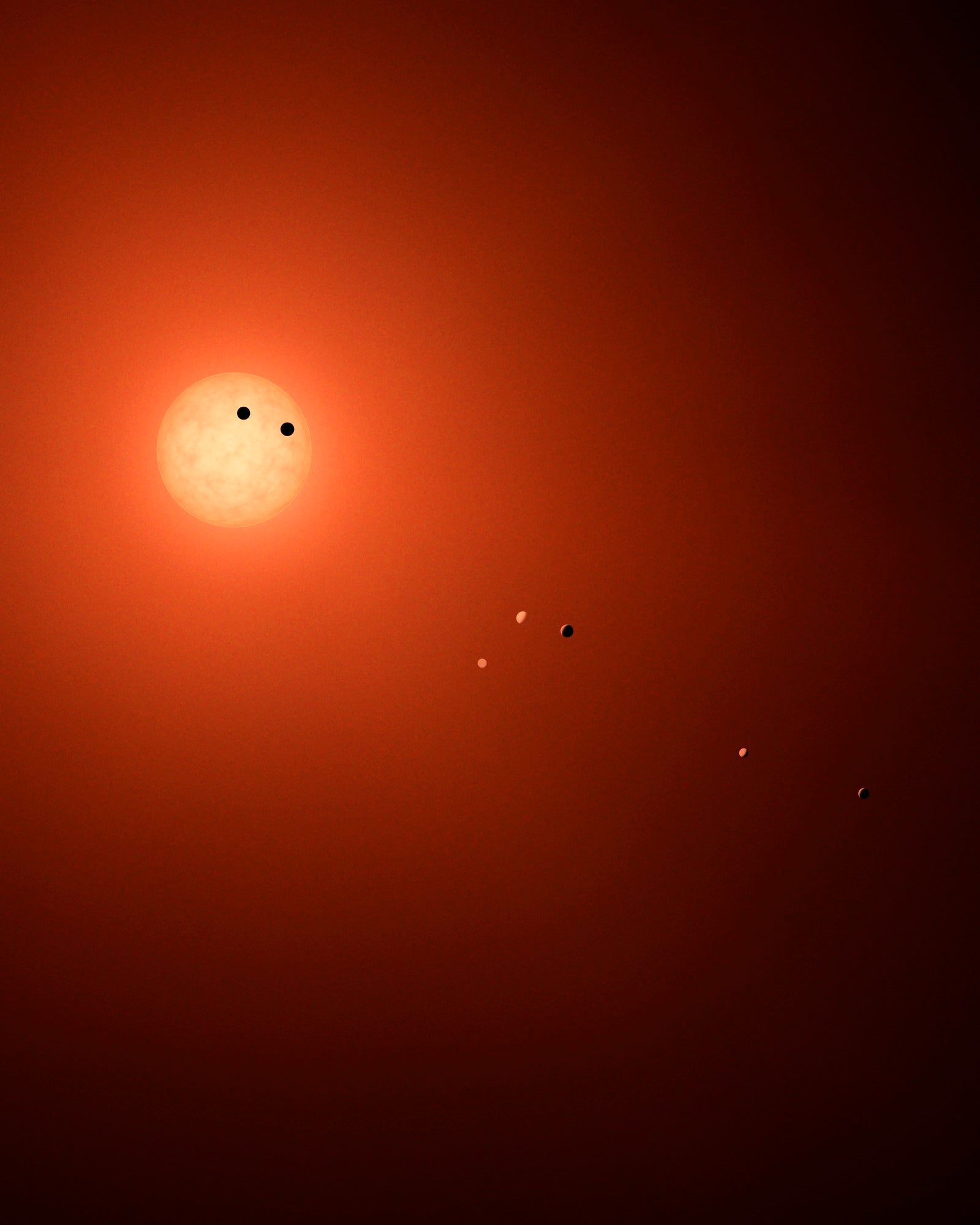Astronomers have long questioned whether Earth-like planets exist elsewhere in the universe and if they harbour life. So far, answers have only come from science fiction universes rather than our own. NASA’s latest observatory, the Webb Space Telescope, will take us one step closer to the answer, offering an unprecedented look into rocky worlds orbiting other stars and what they are like.
“Imagine if we can establish that there are some rocky worlds with water vapour and with water oceans,” said Sara Seager, a professor of physics and planetary science at MIT. “That’s such a giant step forward from where we are today. It’s like, not even quantifiable.”
While Webb will study everything from galaxies to stars, astronomers can’t wait to use it to study planets outside of our solar system. Webb will tease out the details of these exoplanets’ atmospheres, identifying what elements and gases are present. Compared to earlier telescopes, such as the Hubble Space Telescope, scientists expect Webb to offer vast improvements.
“It’s a game-changer,” said Nestor Espinoza, an astronomer at the Space Telescope Science Institute, which operates Webb and Hubble.
Hubble can detect ingredients in the atmospheres of larger gas planets, similar in size to Neptune or Jupiter. Webb, on the other hand, could provide the first analysis of the atmospheres of exoplanets similar to Earth.
“The single fact of being able to detect atmospheres around Earth-sized planets, it’s a huge step into our exploration of what other exoplanets look like,” Espinoza said. “It’s going to be a revolutionary machine.”
Astronomers didn’t discover the first exoplanets until three decades ago, in 1992. They now know of more than 5,000 planets orbiting stars other than the Sun, each one a unique alien world full of untold mysteries. Many of these discovered planets have rocky compositions like the planets of our inner solar system, such as Mercury, Venus, Earth, and Mars. Yet, observing a rocky planet’s atmosphere has remained elusive to scientists, denying them the opportunity to determine key information about the surface of those planets, including if key ingredients for life such as water are present.

To deduce an exoplanet’s atmospheric composition, Webb will use a technique called transmissions spectroscopy. If an exoplanet passes between Webb and the star during its orbit, it will partially block some of the starlight. If the exoplanet has an atmosphere, whatever gases it contains will absorb some of that light before it reaches Webb’s sensitive mirrors. Astronomers can then determine what wavelengths are missing from the light that passed through the atmosphere to infer the gases present.
While astronomers have used this technique dozens of times before with previous telescopes, Webb provides infrared observations, allowing it to discern more gases than Hubble, which mainly detects visible light.
“I think the most exciting thing about Webb is the broad wavelength coverage that it’s going to give,” Thomas Mikal-Evans, an astronomer at the Max Planck Institute for Astronomy, said. “In the [infrared] range, there are many absorption features due to not just water but other molecules like methane and carbon dioxide, carbon monoxide, ammonia, cyanide. It’s really opening up this region of wavelength space that we’ve been blind to and will allow us to detect many more chemical species than we’ve previously been sensitive to.”
One set of exoplanets that astronomers have been eager to view through Webb is the TRAPPIST-1 system. The TRAPPIST-1 system contains seven rocky planets orbiting a red dwarf star slightly larger than the planet Jupiter and half the temperature of our Sun. Of particular interest are the planets in the habitable zone, where water can stay in liquid form.
Detecting an atmosphere on these exoplanets would allow astronomers to do something they have never been able to do: compare the rocky planets in our solar system to rocky planets in an alien solar system. “That has been a dream so far,” Espinoza said.
However, determining the atmosphere’s composition might be easier said than done.

“You have to kind of be lucky that you’ve got an atmospheric composition that has strong spectral features that really pop up in your data,” Mikal-Evans said. Because astronomers can’t predict what is in the atmosphere ahead of time, they don’t know if there will be clouds or haze like on Venus or Saturn’s moon Titan that would reduce Webb’s ability to determine what the atmosphere is made of.
If Webb detects an atmosphere on one of these planets, the next step would be to understand what it is made of and what that tells us about the surface. For example, if Webb discovered water vapour in the atmosphere of a small rocky exoplanet, that would mean there must be a liquid ocean on the surface to provide a steady supply of new water molecules. That’s because the star’s ultraviolet radiation would break the water vapour molecules apart. With the hydrogen floating out into space (as rocky exoplanets are too small to keep it), and the oxygen reacting with a different element and forming a different chemical compound, only a large reservoir of water could replenish the water vapour in the atmosphere.
Of course, if Webb detects water vapour or a gas that’s a potential sign of life — particularly carbon dioxide, methane, or ammonia — an inevitable question will be if we’ve discovered aliens.

All the astronomers interviewed for this story cautioned that, while it is possible that life could be present under those conditions, Webb couldn’t supply convincing evidence of it.
“While I cannot say no, I think [detecting life is] very unlikely for many reasons,” Espinoza said. “Even in the case in which that signal was in the data, like creating the consensus that that’s life, it’s gonna be hugely complicated.”
Getting such a consensus would require evidence that the signal is real and not just random variations in the data. In addition, scientists must rule out any alternative explanation for how the gas could be there without invoking life.
“My opinion is that we won’t sort through all that ever for the limited information we have on exoplanets,” Seager said.
Seager has first-hand experience with this hypothetical scenario. In 2020, she and other scientists reported that they had discovered phosphine in the atmosphere of Venus. Phosphine has few non-life origins, and so finding large abundances of it in an atmosphere could signal life. In response to their research, multiple scientific papers challenged whether phosphine was really in the data or proposed non-biological processes for how it could be there. Other scientists found flaws in those arguments, and the debate is still ongoing.
“I just can’t imagine this level of complex argument on a planet we know nothing about,” Seager said. “We might find some signs, but it’s nothing that people are ever going to be able to prove in any way.”
As for obtaining more evidence, that would fall to the proposed telescopes that come after Webb. “The 2040s is probably a more realistic timeframe for looking for biosignatures seriously,” Mikal-Evans said.
Even though Webb won’t be able to answer whether we are alone in the universe, Seager emphasised that, by studying worlds around other stars, Webb can provide us a new understanding of our place in the universe and how our solar system formed. “It’s going to find some really interesting stuff,” she said.
“If you asked an astronomer 20 years ago about this, they would have thought that this is science fiction,” Espinoza said. “But it is real science.”
Nick (@NickYoungPER) is a freelance science writer based in Ann Arbor, Michigan. He got started in science writing through the American Association for the Advancement of Science’s Mass Media fellowship.
